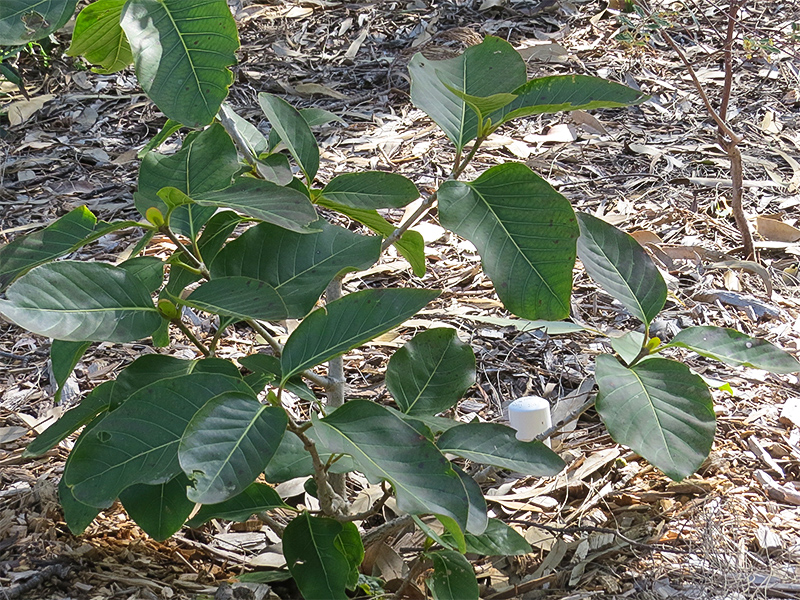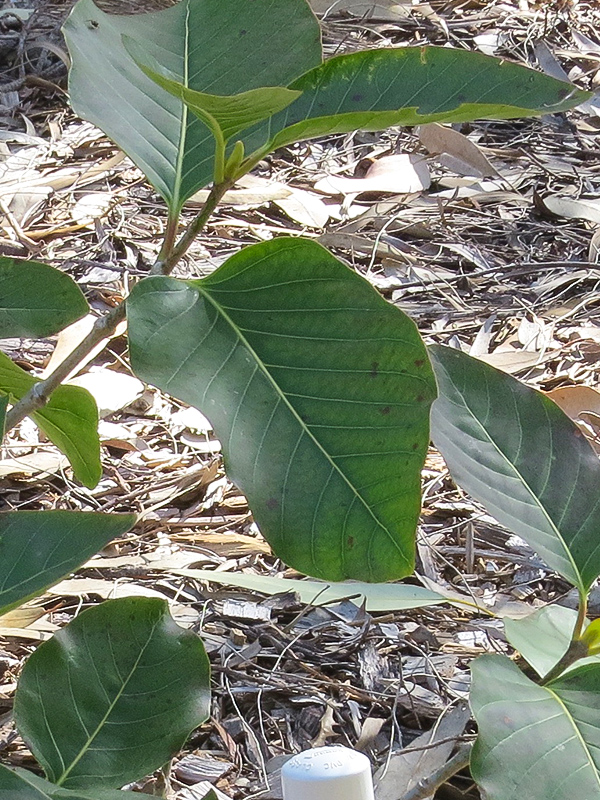
Woody > Nauclea > Nauclea orientalis > Nauclea orientalis
Nauclea orientalis
Cheesewood; Canary Cheesewood; Leichhardt Pine; Cape York Leichardt; Canary Wood; Yellow Cheeswood; Burr Tree
Origin: Australia and Polynesia.
Mike's
Opinion


"
Cheesewood; Canary Cheesewood; Cape York Leichardt; Leichardt; Leichhardt Pine; Leichhardt Tree; Leichhardt's Pine; Pine, Leichhardt's; Soft Leichhardt; Yellow Cheesewood; Burr Tree; Canary-wood
Michael Pascoe, NDP., ODH., CLT., MSc. (Plant Conservation)
"
| Family |
| Rubiaceae |
| Genus |
| Nauclea |
| Species |
| orientalis |
| Category |
| Woody |
| Type |
| Tree (deciduous) |
Photographs
Description and Growing Information
Flowering Period
| Landscape |
| As a specimen, as an accent tree in a tropical garden, in a greenhouse or indoor botanical garden. Can control soil erosion in trouble areas. |
| Cultivation |
| Plant under partial shade in moist, humus-rich loamy soil with a pH between 5.5 and 7.5. |
| Shape |
| Upright rounded. |
| Pests |
| Lyctus beetles, termites and blue stain fungus. |
| Habitat |
| Tropical rainforests. |
| Leaf Description |
| Large simple leaves that measure 18 - 30 cm in length and 15 - 20 cm in width. Small glands are found along the venation on the undersides of the leaves. |
| Flower Description |
| Fully spherical crowns of small calyx tube flowers fused together. |
| Fruit Description |
| Small fruits that typically measure 4 - 5 cm in diameter with a reticulately rugose outer peel. |
| Colour Description |
| Deep green leaves with a visible lighter green venation. Small red glands on the undersides of the leaves. White and copper orange flowers. Light green flower and leaf stems. Brown to tan fruit. |
| Texture Description |
| Medium. |
| Notable Specimens |
| Kings Park and Botanical Garden, Perth, Australia. |
| Propagation |
| By seed. |
| Ethnobotanical Uses (Disclaimer) |
| Fruits are eaten by indigenous people. |

